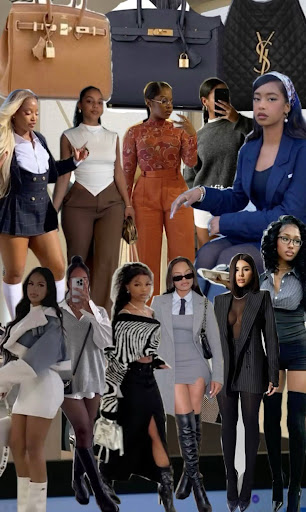Father’s Day is a time to honor the profound role of fathers. In African societies, fathers are more than just parents; they are custodians of heritage, embodying strength, wisdom, and resilience. They are vital links through which traditions, values, and life lessons pass from one generation to the next, forming the foundation of identity and community. “African fatherhood” is incredibly diverse, reflecting the continent’s rich cultures—from the Maasai and Nyamwezi to the Hemba, Zulu, and Xhosa. Across these varied traditions, fathers play pivotal roles, extending their influence to the stability and resilience of the entire community. Supporting fathers is a fundamental strategy for community development, recognizing their role as cornerstones of social cohesion and cultural continuity. Examples of diverse traditional roles and teachings include: Maasai fathers: Protectors, providers, instillers of resilience and survival skills. Hemba fathers: Custodians of traditions, leaders, mediators, passing down cultural heritage, respect, integrity, and humility. Zulu fathers: Leaders, protectors, transmitting ancestral wisdom, cultural pride, respect, bravery, and unity. Xhosa fathers: Guides and mentors, teaching life lessons, cultural history, spirituality, responsibility, and cultural pride through rituals like “ulwaluko.” Bamileke fathers: Providers and educators, imparting farming, craftsmanship, and business skills, emphasizing education. Fulani fathers: Preservers of cultural traditions, instilling discipline, resilience, and adaptability for nomadic livelihoods. Tikar fathers: Custodians of cultural heritage and moral values, passing down rituals, ceremonies, oral traditions, and ethical behavior. Lessons for Life: Values and Character Traits Imparted African fathers shape their children’s moral compass, instilling core values for ethical behavior and responsible citizenship. Fathers in Hoedspruit serve as role models of integrity, emphasizing honesty, respect, and responsibility, teaching that success includes contributing positively to society. Tikar fathers stress ethical behavior, honesty, and respect. These values are taught through direct instruction, modeling, and community participation. Fathers foster a strong sense of community and collective responsibility. Hoedspruit fathers teach about family bonds and teamwork, drawing lessons from nature (e.g., lion prides and elephant herds). Tikar fathers emphasize respect for others. The natural world often serves as a classroom, making abstract concepts tangible. Fathers also equip children with mental fortitude, fostering resilience and adaptability. Fulani fathers instill discipline, resilience, and adaptability for nomadic life. Resilience is the ability to bounce back from adversity, and fathers encourage learning from setbacks, preparing children for unpredictable challenges. Hands-On Wisdom: Practical Skills and Resourcefulness Historically, African fathers equipped children with practical skills for survival and economic sustenance. Maasai fathers teach pastoralism, while Bamileke fathers pass down farming, craftsmanship, and business skills. Fulani fathers preserve cultural traditions and livelihoods. These skills maintain the economic and social fabric of the family and community. Contemporary African fathers also pass down modern practical know-how, imbued with deeper life lessons. South African fathers teach skills like braai (fire-making and grilling), which fosters patience and communal bonds. Basic car maintenance teaches self-sufficiency and safety. Tying a tie teaches presentation and confidence. These tasks become vehicles for transmitting responsibility, preparedness, attention to detail, and respect. Underlying these skills are universal lessons about diligence, foresight, and independence. They build connection, resourcefulness, and quiet confidence, equipping individuals with a mindset for navigating challenges. Direct paternal guidance in acquiring tangible skills directly builds a child’s confidence, preparing them for life’s challenges in any environment. The Evolving Father: Nurturing and Engagement in Modern Africa African fatherhood is transforming, moving beyond provider and protector roles to embrace more active, nurturing, and emotionally engaged parenting. This evolution is driven by socio-economic changes, urbanization, and a global re-evaluation of gender roles. Education is a key catalyst, empowering fathers with knowledge for holistic involvement, dismantling harmful stereotypes, and fostering nurturing roles. Modern African fathers balance traditional provision with profound emotional support. Hoedspruit fathers, like fish eagles, balance hunting and caring. They provide stable, loving environments where children can thrive emotionally and intellectually, listening to fears, dreams, and aspirations. This balance is crucial for holistic child development. The Profound Impact: Why Fathers Matter Immensely Fathers foster a child’s inner strength and self-worth, providing foundational security. Black fathers are crucial for self-esteem, modeling virtues like courage and integrity. Their positive affirmations and active involvement create a supportive environment for children to explore passions, develop skills, and take risks. Fathers instill a deep love for lifelong learning. They engage in conversations, encourage reading, and participate in educational paths (parent-teacher meetings, homework, extracurriculars). Bamileke fathers emphasize education, supporting academic journeys, often intensified in migrant families where success repays parental sacrifices. Fathers help children understand emotions, communicate effectively, and build empathetic relationships. Black fathers teach emotional intelligence through open dialogues and shared experiences. A father who demonstrates emotional intelligence teaches children to understand and manage emotions. They foster open communication by creating an environment where emotions are discussed, modeling vulnerability to humanize themselves. A father’s consistent presence and active involvement contribute significantly to a child’s sense of security, stability, and overall well-being. They safeguard their families, ensuring a safe and secure environment. Research shows that father absence is associated with developmental challenges, including developmental delays, teenage pregnancy, delinquency, and abuse. This highlights the foundational importance of paternal involvement for healthy child development. Real-life examples illustrate the profound dedication and resilience of African fathers. Alphonse Batundi (DRC) moved his sons for safety, embodying relentless protection. Douglas Bashonga (DRC) meticulously implemented cholera prevention to protect his family. Adama Kone (Côte d’Ivoire) rushed his premature baby to the hospital, demonstrating immense courage. Thembile (South Africa), a single father, sought support from a parenting program, showing adaptability and commitment to growth. These stories make the immense impact of fathers tangible and moving. A Legacy of Love, Leadership, and Resilience African fathers, in their diverse traditional and evolving modern roles, are irreplaceable figures. They are foundational architects of character, steadfast guardians of cultural heritage, and enduring wellsprings of resilience that strengthen individuals and the fabric of African societies, both on the continent and in the diaspora. Their impact is profound and far-reaching. African fatherhood is a dynamic continuum, constantly adapting to socio-economic changes, urbanization, migration, and global influences, while preserving core values and










